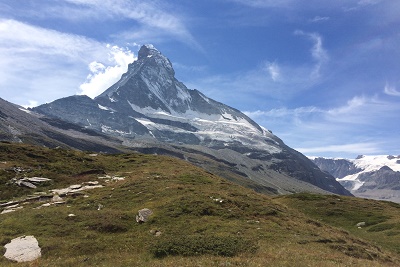- Trips
- Tour Calendar
- About Our Tours
- Plan a Trip
- Book a Trip
- About Us
- Contact Us


Within the Swiss Alps lie nearly all of the highest peaks in Western Europe. These stunning peaks have attracted climbers and tourists for hundreds of years. No wonder the Alps is such a popular hiking and trekking destination.
In addition to the highest peaks, there are also other famous mountains in Switzerland, which may not be quite as high, but have special significance within their region or as tourism features. Many of these incredible peaks in the Swiss Alps can be viewed on Alpenwild tours.
|
Name of Peak |
Elevation |
First Ascent |
Location |
|
Dufourspitze (Monte Rosa): |
4634 m / 15,203 ft. |
1855 |
Pennine Alps - Valais |
|
Dom |
4545 m / 14,991 ft. |
1858 |
Pennine Alps - Valais |
|
Liskamm |
4527 m / 14,852 ft. |
1861 |
Pennine Alps - Valais |
|
Weisshorn |
4506 m / 14,783 ft. |
1861 |
Pennine Alps - Valais |
|
Täschhorn |
4491 m / 14,734 ft. |
1862 |
Pennine Alps - Valais |
|
Matterhorn |
4478 m / 14,692 ft. |
1865 |
Pennine Alps - Valais |
|
Dent Blanche |
4357 m / 14,295 ft. |
1862 |
Pennine Alps - Valais |
 “death wall” because of the deadly danger it poses to climbers. The Eiger was first climbed in 1858, but the first successful ascent of its North Face was in 1938.
“death wall” because of the deadly danger it poses to climbers. The Eiger was first climbed in 1858, but the first successful ascent of its North Face was in 1938.